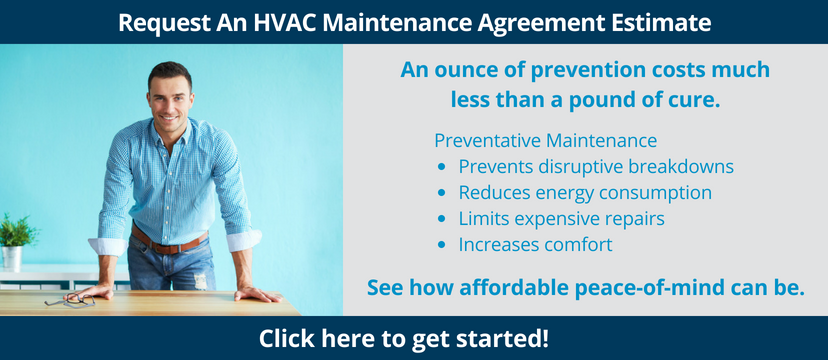If you’re considering installing a new air conditioning system, you’ve probably run across many rating acronyms. These ratings are all about the energy efficiency of the air conditioner, and they can help you compare models. That’s important, since as much as 50% of the energy usage in your home or commercial space is consumed by your HVAC system.
The problem is, the equipment manufacturers don’t tell you how to interpret those numbers. Here’s a primer on the various air conditioning energy efficiency ratings, what they mean and what numbers you should look for.
Air conditioning energy efficiency ratings you should know
SEER and SEER2 (Seasonal Energy Efficiency Ratio)
SEER measures the energy efficiency of cooling equipment, calculated based on a seasonal average as opposed to specific laboratory conditions. The SEER is the ratio of cooling output (or the amount of heat removed from the space during the cooling season) in British Thermal Units (BTU) divided by electricity usage over the same time period. This number gives you the most accurate assessment of the unit’s efficiency over the course of the year. A higher the SEER rating means the unit is more energy efficient.
SEER2 is a revised version of the SEER rating system that took effect in January 2023. Because they account for efficiency loss due to system cycling and airflow conditions, the new SEER2 ratings are considered a more accurate. When comparing SEER and SEER2 numbers, a unit with a 14 SEER rating is less efficient than one with a 14 SEER2 rating.
Today’s most efficient central air conditioning systems have SEER and SEER2 ratings between 20 and 28. Heat pumps and ductless mini-split systems can have ratings of 30 or higher.
How much can you save by choosing a more efficient model? By upgrading from an older unit rated 10 to a new unit rated 14, your power consumption is reduced by 30%.
According to the U.S. Environmental Protection Agency (EPA), every dollar invested in energy efficiency can produce a double or triple return on investment. If your equipment is over 10 years old, upgrading to high efficiency equipment can pay for itself in a surprisingly short period of time. Your older model may only be rated 10 or lower. A newer cooling system with a SEER rating of 16 costs half as much to operate as a unit with a rating of 8.
EER (Energy Efficiency Ratio)
EER is a measurement of the cooling output of an air conditioner in BTUs divided by its electricity usage in kilowatts. Unlike the SEER rating that’s based on a seasonal average, the EER is calculated under specific test conditions that represent peak load during the highest temperatures of the season. A higher number means a more energy efficient system.
Look for an EER rating greater than 11.6 and up to 16.2, for high-efficiency operation when the weather is at its hottest. Ratings for heat pumps may be as high as 19.
Air conditioner energy efficiency ratings are a bit like miles per gallon (MPG) ratings for cars. Using this analogy, you can think of the SEER rating like the MPG for city driving, and the EER rating like the MPG for highway driving. It’s important to look at both to get an accurate idea of the unit’s performance under different operating conditions.
Also keep in mind that a unit with a high SEER rating won’t necessarily have a high EER rating, and vice versa.
HSPF (Heating Seasonal Performance Factor)
HSPF measures the efficiency of a heat pump system that provides both heat and air conditioning. Air source heat pumps can cycle in both directions, so they can provide cooling in the summer months and heating in the winter. SEER and EER are used to measure the cooling efficiency of the unit, and HSPF measures the heating efficiency.
HSPF is the ratio of the total space heating required during the heating season in BTU divided by the total electricity used by the heat pump system, expressed in kilowatt-hours. Like SEER and EER, a higher HSPF number means a more efficient unit. Today’s efficient heat pumps have HSPF ratings of at least 8 and up to 13.
Don’t neglect maintenance to keep your new system running efficiently
The easiest and most effective way to save money on your air conditioner’s energy consumption is to have your system regularly cleaned and tuned up.
Learn more: 10 Ways to Tweak Your HVAC System and Save on Your Energy Bills.
Clogged air filters, dirty vents, condensers with accumulated grime and worn parts force your system to work harder to produce the same cooling results and use more energy in the process. Have your system inspected, cleaned and serviced at least twice per year. You’ll not only save on energy costs, but prevent equipment breakdowns that can cost even more.
To get the best rates on maintenance, and so you won’t forget to do it, set up a preventative maintenance contract with a reputable air conditioning service company.
Learn more: 10 Questions to Help You Find the Perfect NYC HVAC Service Provider
Be sure to shop around, since all maintenance contracts are not the same. The right provider can customize a contract based on the needs of your business and your equipment. To learn more, get our helpful guide, HVAC Preventative Maintenance Contracts: How to Find the Right One for Your HVAC Infrastructure.
If you’re in the NYC metro area, Arista can take care of your equipment and keep it running reliably. Request a quote today.


